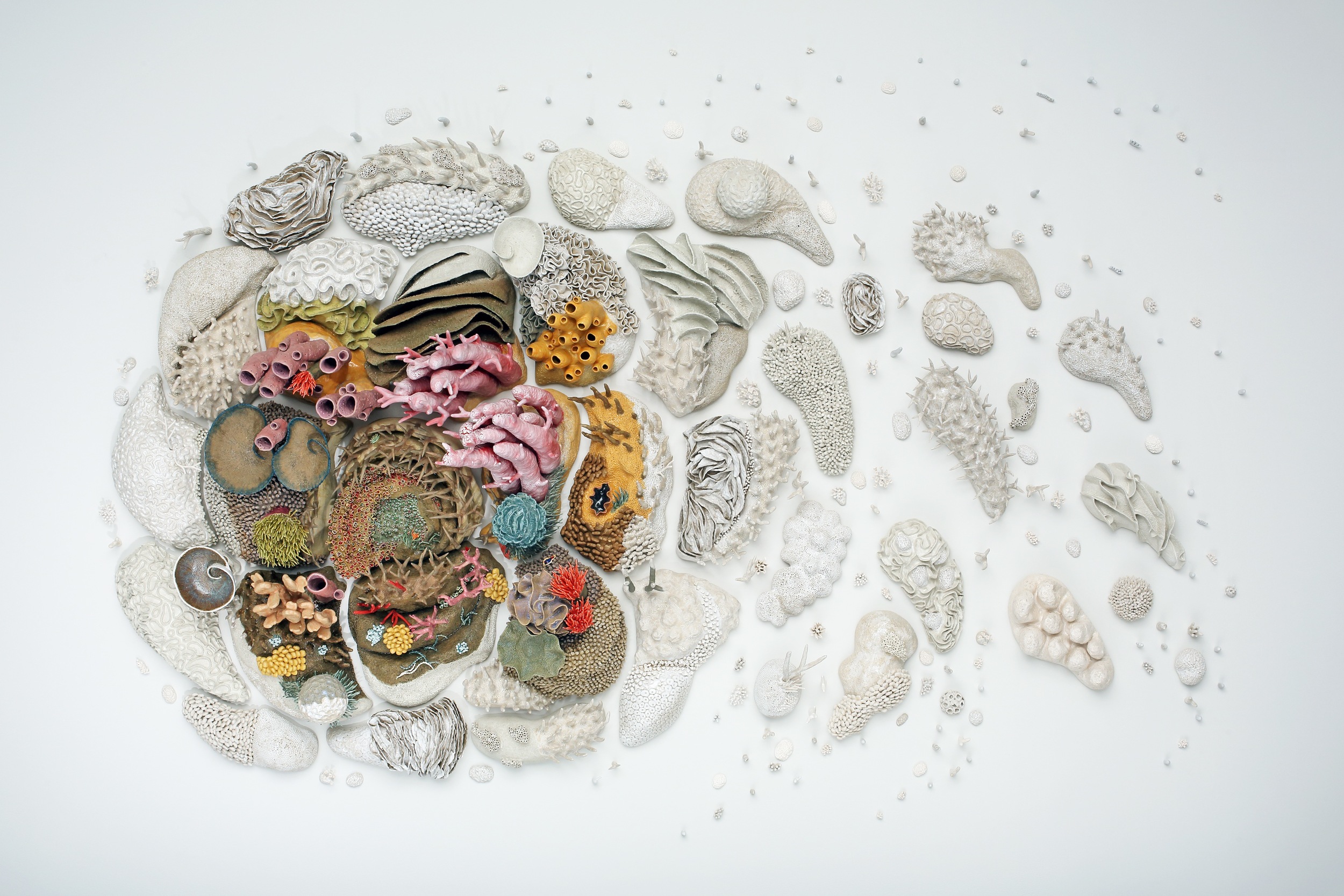

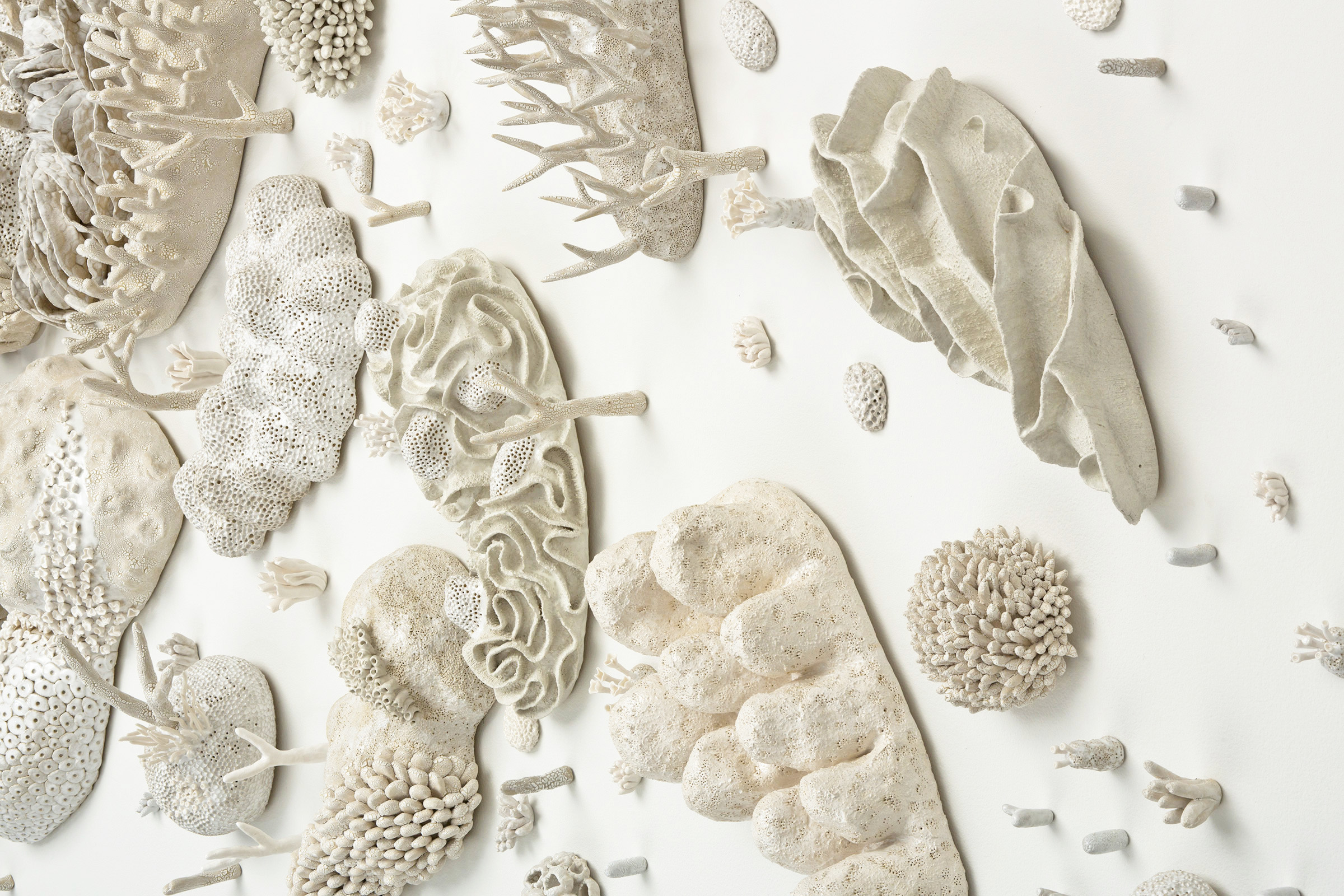
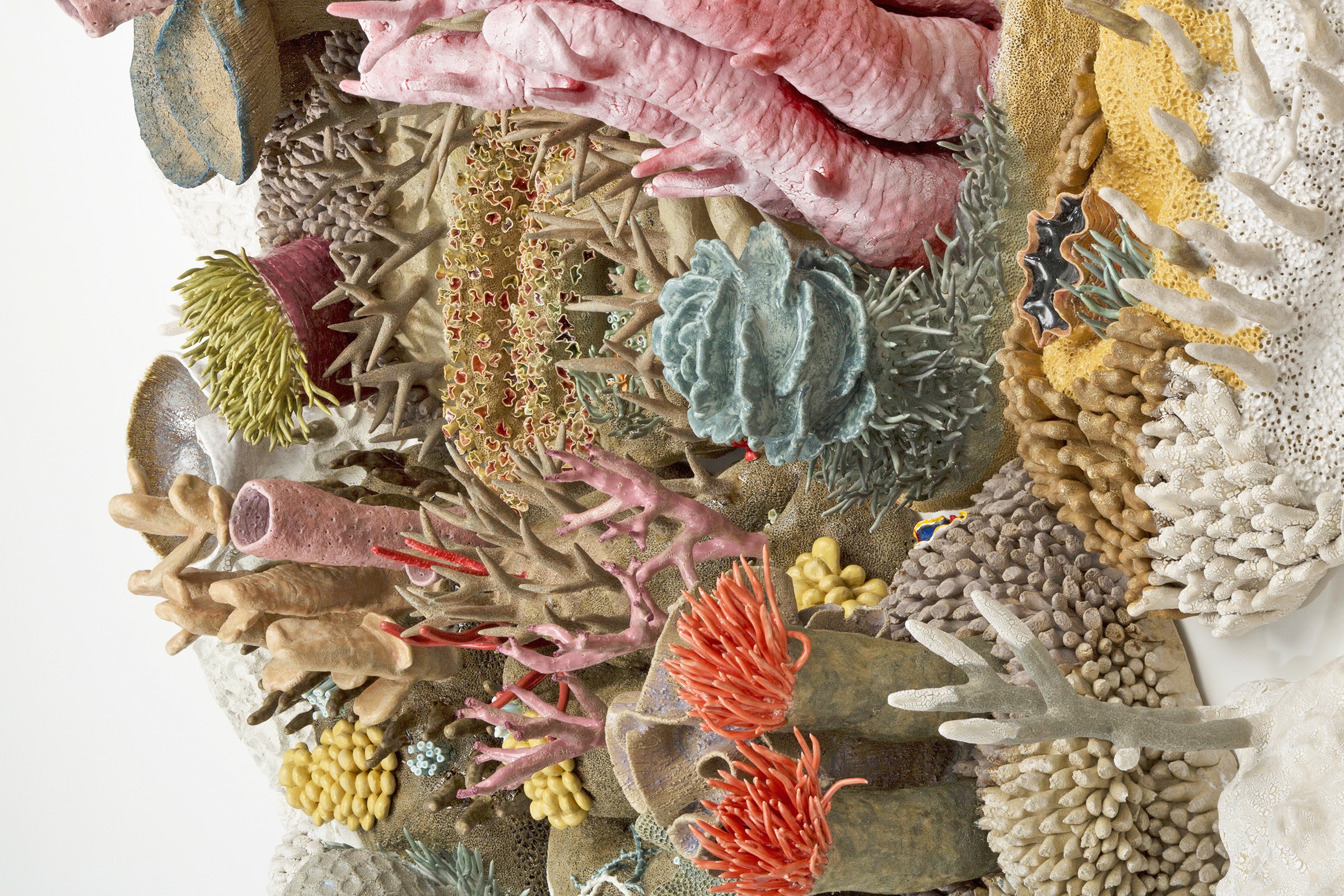
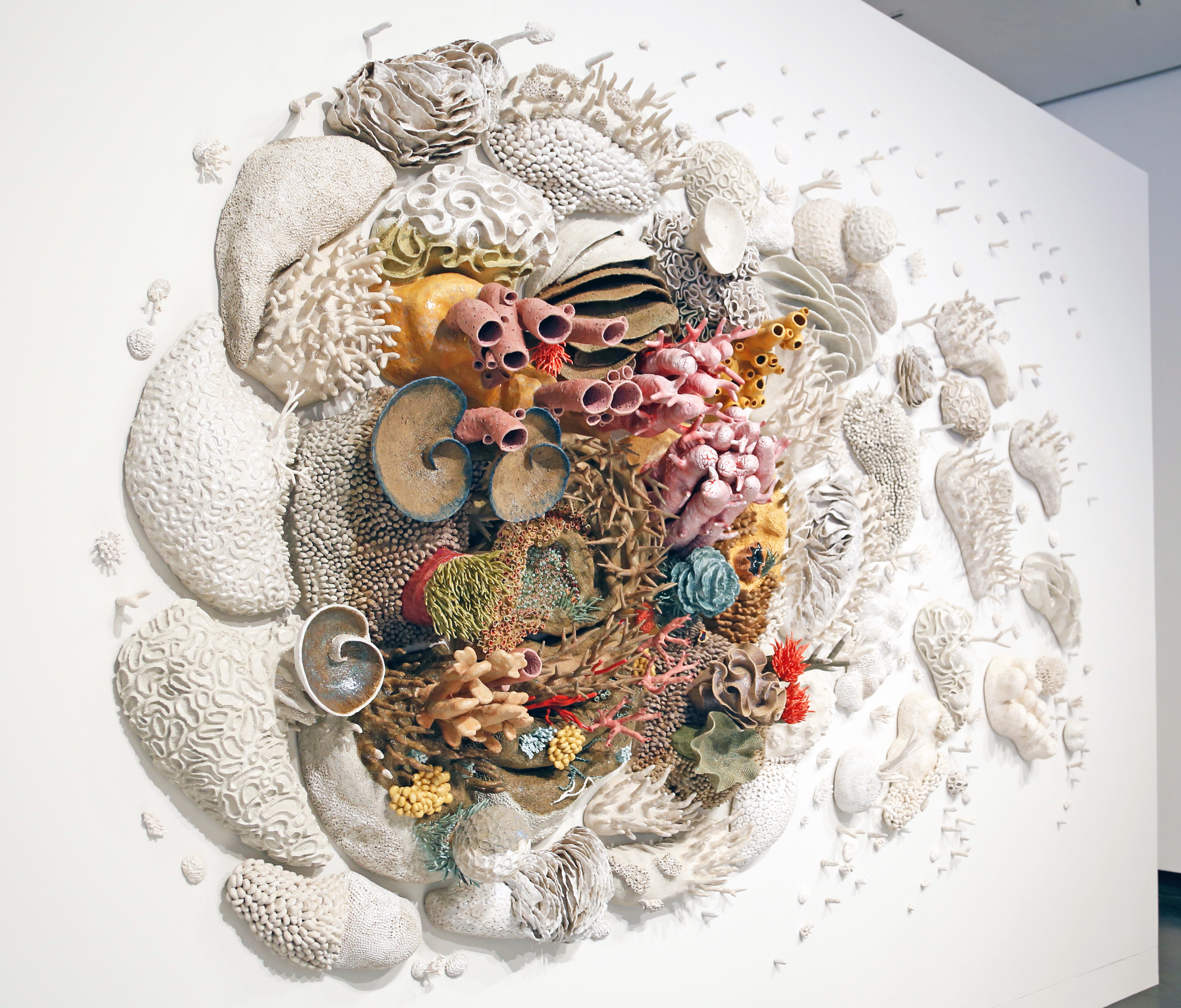
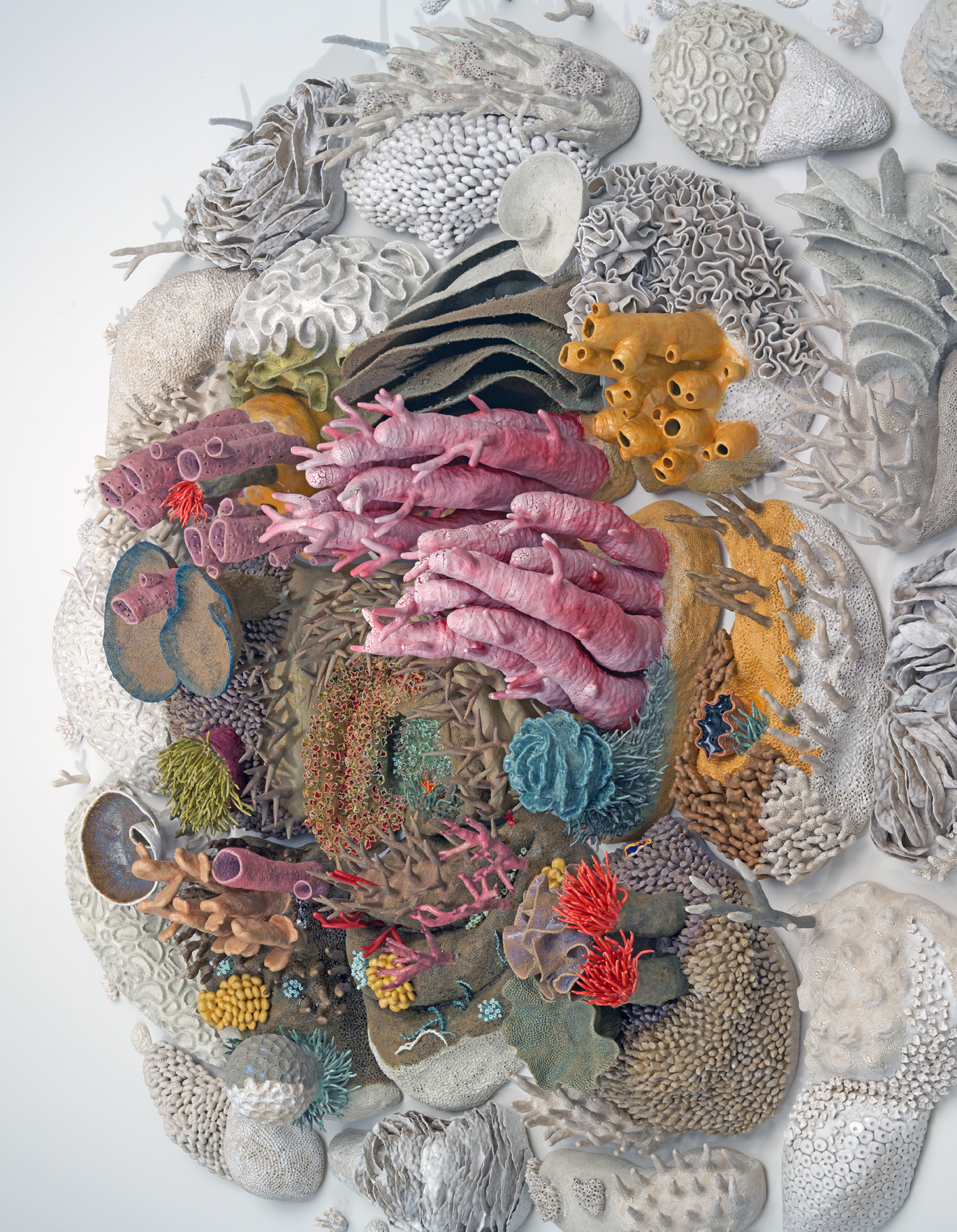
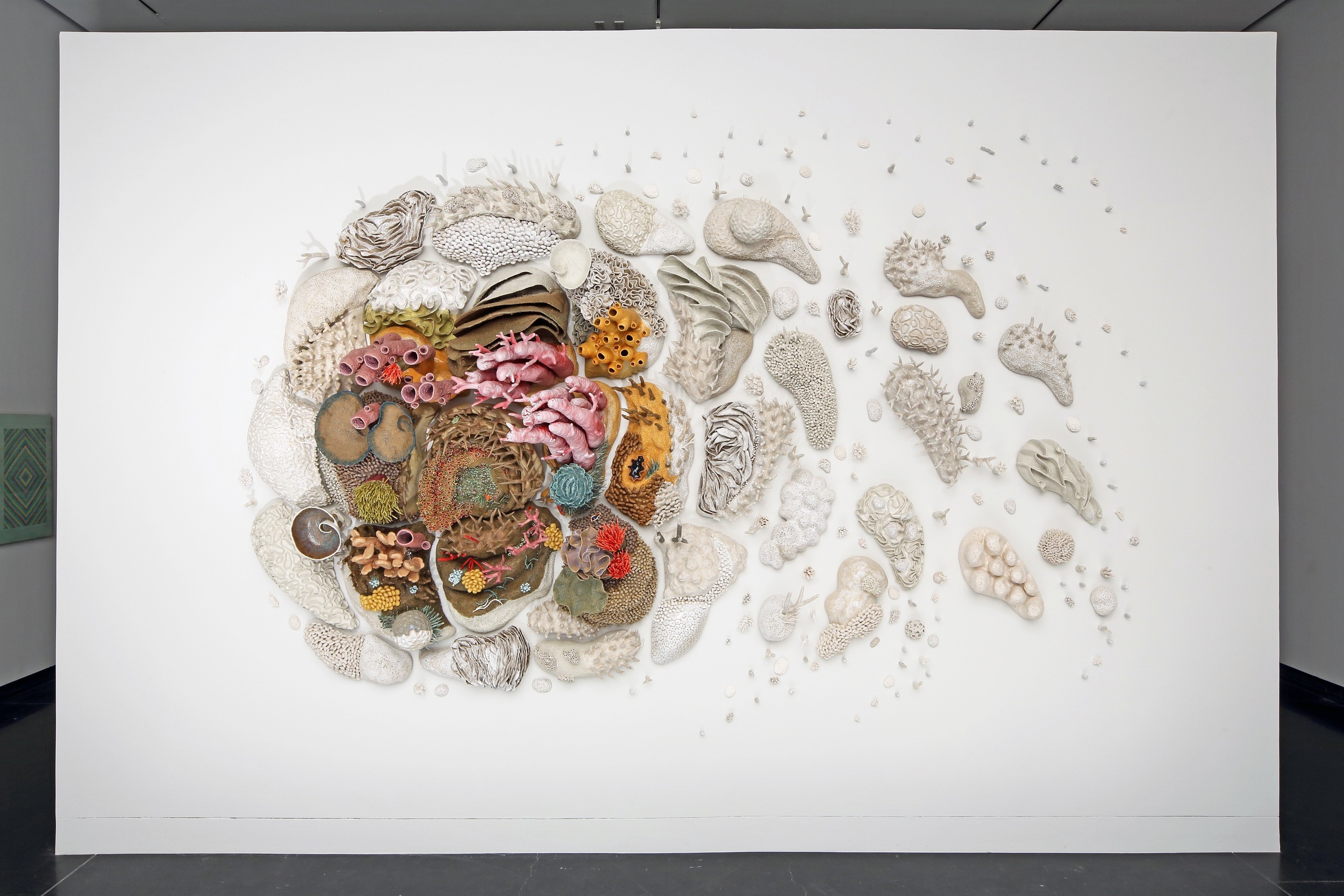

by courtney mattison
2014
glazed stoneware + porcelain
274 x 396 x 55 cm (108 x 156 x 22 in)
artist statement:
I love coral reefs for being exotic, amazingly diverse and often venomous. Maybe it’s because I’m small and I respect small creatures that can build big beautiful things, but I feel like I relate to corals – arguably one of the least relatable animals – on a very deep level. That’s partly why I care so much about their demise. Corals are so sensitive that the slightest change to the temperature or chemistry of the seawater that surrounds them can cause total devastation through coral bleaching, death and reef erosion. Without our help to eliminate greenhouse gas emissions, pollution and over-fishing, scientists agree that reefs may cease to function as ecological cradles for marine life by the end of this century. Are coral reefs doomed to fade into oblivion or will we allow them to recover and regain their vibrancy?
I hope that the idea of one small person creating such huge, intricately detailed ceramic sculptural installations causes viewers to realize just how important reefs are to me, and to become curious enough to learn more about how the ocean is important to them. I also secretly enjoy feeling like a coral, patiently and methodically constructing large, delicate, stony structures that can change an ecosystem. I use simple tools like chopsticks and paint brushes to sculpt and texture each piece by hand – often poking thousands of holes to mimic the repetitive growth of coral colonies. Individual coral polyps precipitate calcium carbonate from seawater to form stony skeletons that, over time, grow atop one another to compose the vast, complex structures we know as reefs. It therefore feels essential that the medium of my work be ceramic, as calcium carbonate also happens to be a common ingredient in clay and glaze materials. Not only does the chemical structure of my work parallel that of a natural reef, but brittle ceramic anemone tentacles and coral branches break easily if improperly handled, similar to the delicate bodies of living reef organisms.
Our Changing Seas III is the third in my series of large-scale ceramic coral reef installations that celebrates the exotic beauty of coral reefs while highlighting the threats they face. This piece explores the rapid transition that corals throughout the tropics and subtropics are making from healthy, colorful and diverse to sickened and bleached as a result of human-caused climate change, which is putting coral reefs into the proverbial “eye of the storm.” At its heart, this piece celebrates my favorite aesthetic aspects of a healthy coral reef surrounded by the sterile white skeletons of bleached corals swirling like the rotating winds of a cyclone. There is still time for corals to recover even from the point of bleaching if we act quickly to decrease the threats we impose. Perhaps if my work can influence viewers to appreciate the fragile beauty of our endangered coral reef ecosystems, we will act more wholeheartedly to help them recover and even thrive.
Photos by Arthur Evans for the Tang Museum *